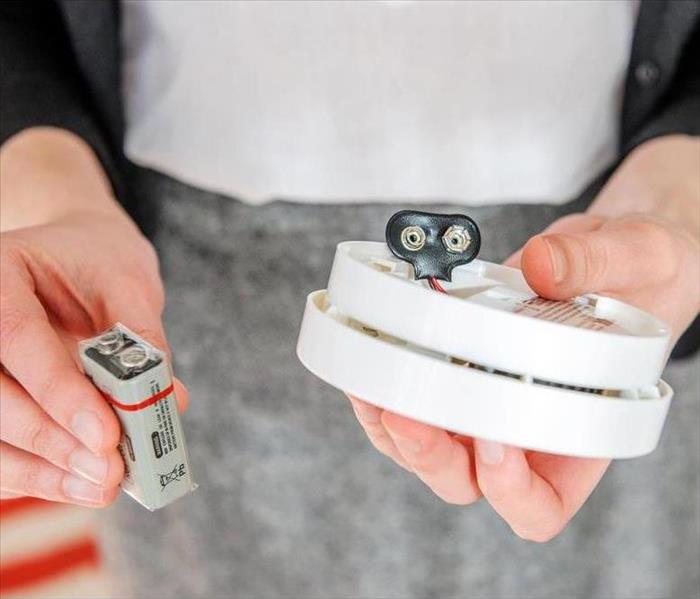Smoke Alarms & Fire Extinguisher Safety Tips
8/28/2019 (Permalink)
 Change the batteries in your smoke alarm when you hear a low battery warning, or at least once a year.
Change the batteries in your smoke alarm when you hear a low battery warning, or at least once a year.
Wildfires are becoming a year-round concern across California, including Los Angeles and the surrounding valleys. To reduce the risk of home fire damage, be prepared with these two important fire safety tips.
Smoke Alarms: Test, Change, Replace
Smoke alarms can save lives… but only if they're working properly. According to National Fire Protection Association, nearly three of every five home fire deaths resulted from fires in homes with no working smoke alarms.
To ensure your smoke alarms are always in good functioning order:
Test every smoke alarm in your home at least once a month
Change the batteries when you hear a low battery warning, or at least once a year
Replace old smoke alarms every 10 years
Smoke alarm technology has changed and improved rapidly over the past few years. The best new smoke alarms have dual sensors to detect smoke from both slow-smoldering and fast-flaming fires. Some units can also detect carbon monoxide as well as smoke. And others can be interconnected, to each other or through a hub like Google Nest, so that when one alarms detects smoke, all of the alarms sound.
Most importantly, be sure you and your family have a fire evacuation plan, including fire exits and a meeting place to make sure all of your loved ones are safe and accounted for in the event of a fire emergency.
Fire Extinguishers: Know Your ABCs from Your PASS
Another important first defense against fire damage is fire extinguishers. But as with smoke alarms, fire extinguishers are only helpful if they work.
When you test your smoke alarms each month, you should also visually inspect your fire extinguishers for damage. Make sure the pressure gauge reads in the green or at a pressure level of at least 185 psi. If below, replace the fire extinguisher or have it recharged at your local fire station.
Of course, even a working fire extinguisher is only effective if you know how to use it. Follow the PASS method:
Pull the pin
Aim low at the base of the fire
Squeeze the handle to discharge
Sweep from side to side to extinguish the fire
Also, be sure your home fire extinguishers is classified as multipurpose and suitable for the following three types of materials:
A is for ordinary combustible material, like paper, wood or cloth
B is for flammable liquids such as gas, oil or paint
C is for electrical equipment
Other fire extinguishers are suitable for flammable metals (Class D) and cooking fats and oils (Class K) like those used in restaurants. You may want to have one of these specialized fire extinguishers on hand if you work with such materials in your home.
There are other things you can do to prepare your home for wildfires, but having working smoke alarms and fire extinguishers are two important first steps.
And if you find your home damaged by fire, smoke and soot from wildfires, call SERVPRO of North Hollywood, 24/7, and let our fire restoration specialists cleanup and recover your property "like it never even happened."






 24/7 Emergency Service
24/7 Emergency Service